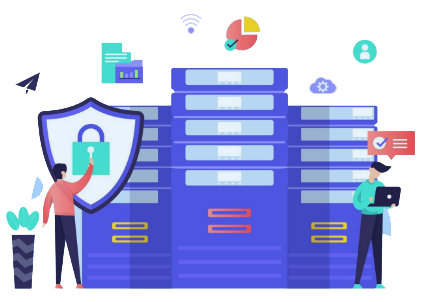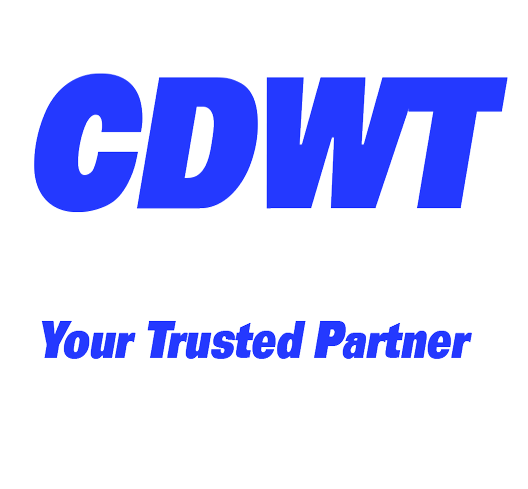
Total Cost of Ownership (TCO) Analysis and Data Center Exit, Modernization Services
Assess IT and Data centre Lifecycle ROI | Modernize Data Centers | Using Intelligent Automation, Optimize Processes

Cost of Ownership (TCO) Evaluation: Is Cloud IT less expensive than On-Premises IT?
You should not judge a book by its cover. And, IT expenditures from hardware purchase invoices
Justifying the worth of an automobile based only on its selling price is a significant misconception. Over time, fuel charges, repair and maintenance costs, and depreciation contribute to the overall lifespan costs of the equipment. Over the course of a few years, the car’s continuous operating expenditures (OpEx) surpass the original capital expenditure (CapEx). Similarly, choosing traditional, on-premises IT infrastructure and data centre facilities due to expensive cloud migration costs ignores the latter’s immense benefits in reducing long-term operating costs: cloud-native cost optimization and billing solutions, real-estate savings, energy efficiency, zero maintenance costs, and the’mythical’ pay-as-you-go pricing model. Cloud TCO, or Entire Cost of Ownership, is defined as the total investments in acquiring, consuming, administering, and withdrawing/replacing all cloud assets over a time (CapEx + OpEx).
Although the vast majority of cloud services are offered under a zero CapEx model and all costs are incurred on an as-operated or as-used basis, In addition to asset migration costs (workloads, servers, databases, networks, computing infrastructure), the analysis maps the costs of potentially usable cloud applications, operation and energy consumption bill or power cost, cooling expenses, software architecture licensing/re-licensing costs, compliance and data integrity management costs, upskilling/training expenses, potential solution replacement/on-premises accessory upgrades and maintenance costs, and more.
This detailed TCO analysis and mapping provides enterprises with precise insight into Cloud ROI, performance requirements, and revenue goals for the next years. Moreover, this enables cloud managed service providers and Cloud TCO or Total Cost of Ownership (TCO) experts such as CDWT to implement advanced cost optimization policies, workload rightsizing, asset modernization strategies, process automation solutions, and data-intuitive governance checks to maximize cloud benefits for clients while minimizing total costs.
Cloud Total Cost of Ownership (TCO) Model Advantages
Accurate financial models for negotiating with suppliers and cloud service providers to choose the most optimal cloud migration option.
Monitoring cloud wastage, including energy inefficiency in operation. Utilizing sufficient cloud use optimization technologies as required
Aid in strategic decision-making for upskilling, outsourcing, and onboarding IT teams, developers, cloud architects, and other specialists.
Accurate Return on Investment (ROI) estimate based on time and the fluctuating operating costs over time
Long-term IT investments, corporate finances, expansion, etc., intuitive, analytic forecasts and overviews.
Help in comprehending duplicate cloud apps, business procedures that might be removed to save IT expenses, and traffic bottlenecks.
Assist in the mapping of innovation and the integration of automation technologies to enhance operational efficiency and, therefore, Total Cost of Ownership (TCO) reductions.
Identification of security vulnerabilities and infrastructure health issues leading to well-informed DR decisions.
Enable a dynamic, near-real-time Total Cost of Ownership analysis by accelerating global visibility with automated governance audits and compliance checks across all cloud assets and operations.
Implementation of sophisticated cost optimization tactics and models, such as workload right-sizing, asset modernization, upgrades, and replacements, to assure long-term profitability.
Costs to Consider: MAP Analysis of Total Cost of Ownership
Data Center Certifications
Cloud Infrastructue Costs
Cloud Platform Costs
Cloud Application Costs
Technology Infra Expenses
- Server rental fees and operating expenditures
- Server maintenance and upgrade expenses - Typically once every three to five years (Usually applicable for private or hybrid cloud models)
- Accessories for servers load balancers, server racks, spare components, etc (Physical for private or hybrid cloud models, virtual mode for public cloud models)
- Server rental fees and operational/periodic use fees for platforms (pay-as-you-go model)
- Expenses resulting from increasing workloads, traffic, and access demands
- Virtualized backend asset costs facilitate the flawless operation of cloud systems (Usually hidden costs with the pay-as-you-go model)
- Costs for rented application servers and operational/periodic use of apps based on traffic demands (the pay-as-you-go model)
- Additional costs incurred as a result of high traffic volume and repeated backend application access requests.
- There are often no additional backend expenses unless many apps from various providers need an additional application layer for synchronisation reasons.
Virtualization and Software Expenses
- IaaS provider and partner support services expenditures
- Infra replacement, integration, augmentation expenditures
- Virtual Infra security expenses, such as real-time threat monitoring, health concerns, etc.
- Virtual Infrastructure downtime expenses: Disaster Recovery, Operational Interruptions, and Business Continuity Planning. Private hybrid cloud models might incur asset depreciation expenses.
- Costs for virtualization, modernisation, right-sizing, and customization of assets to allow optimal cloud performance
- Expenses for PaaS provider and partner support services
- Expenses associated with platform replacement, refurbishment, and new architecture installation, as well as data exports and archived system administration.
- Platforms Cybersecurity Management expenses, including Vulnerability Assessment and Malware attack screening, among others.
- Platform downtime and security-related expenses: Disaster Recovery, Operational Disruptions, Data Backup and Recovery, and Business Continuity Planning. Costs associated with the depreciation of the platform's value may be relevant to private-hybrid models.
- Additional expenses for cloud-native libraries, languages, and interfaces required to execute, build, deploy, and test code.
- Expenses for SaaS provider and partner support services
- Renovating, replacing, or forcibly upgrading applications, including data consolidation, data integration, data transfer, storage, and archiving administration.
- Application Security Costs include DDoS, Phishing, and Dark Web Leaks Management fees, etc.
- Costs associated with application downtime and security: Disaster Recovery, Operational Interruptions, Data Backup and Recovery, and Business Continuity Planning.
- Costs associated with application value depreciation may be relevant to private hybrid models.
- Additional cloud-native products and tools that operate on top of business applications to enhance critical application modes and analytical visibility.
Facility Management Expenses
- Space for datacenters and other on-premises equipment, such as networks, computer infrastructure, and data storage devices (Physical for private or hybrid cloud models, virtual mode for public cloud models)
- Expenses for the cooling system and other auxiliary components
- Electricity costs for infrastructure or cloud access devices operating for the business
- Costs associated with platform lifting-shifting, re-architecture, re-structuring, replacement, and customisation
- Costs associated with enhancements and interfaces, as well as the integration of current systems and applications.
- Electricity and energy costs for platforms operating on accessible computer devices
- Costs associated with adapting, re-architecting, renovating, and modernising applications to guarantee optimal cloud performance.
- Costs for application add-on modules, functions, and additional interface layers
- Energy and energy costs for on-premises applications
Administrative and Governance Expenses
- Asset compliance and governance audits and management expenses for all the organization's assets.
- Infra licencing fees, if applicable
- Subscription costs for virtual infrastructure from the cloud provider (IaaS Model)
- Expenses for resource training, skilling, and enhancement
- Helpdesk, user, and admin support expenditures
- Costs for platforms, architectures, and compliance in the form of fixed contracts (often, organisations who choose for the cloud are not required to pay for conventional updates and maintenance).
- Costs associated with platform and architectural licences and renewals. Inactive licences management
- Cloud platform subscription fees charged by cloud providers (PaaS Models)
- Full-stack Development resource training, upskilling, and augmentation costs: Cloud DevOps Model implementation
- Helpdesk, user, and admin support expenditures
- Audits of application compliance for data localization, data compliance, international standards, etc.
- Costs for managing application licencing, renewals, and dormant licences
- Costs of Application Subscriptions from Cloud Service Providers (SaaS Models)
- Application Developers, UI-UX Engineers, and Technical Experts costs: Training, upskilling, and augmentation to deploy a Cloud DevOps Model effortlessly.
- Helpdesk, user, and application administration support cost
CDWT's Data centre Exit and Modernization on the Cloud: Unlocking Transformative Opportunities
‘A legacy UPS running at 88 percent efficiency has an additional energy cost of USD 400,000 due to inefficiency over 10 years as compared to a modern UPS running at 96 percent efficiency’ - Economic Times
The preceding statistic about a single UPS may seem trivial. However, when seen from an enterprise perspective, this demonstrates the insurmountable costs associated with maintaining tens of thousands of square feet of antiquated data centre or IT infrastructure. Entangled in a labyrinth, enterprises often wind up employing antiquated facilities for aeons, severely restricting their daily productivity, scalability of workload, expansion, and innovations. For an individual, this is a transitory deterrent, but for major corporations, these represent billions of dollars in damages.
To reduce the total cost of ownership, embracing a complete digital transformation on the cloud becomes inevitable. Only a well-articulated Data Centre Exit and Modernization plan could do the same. Cloud providers and managed cloud services firms such as CDWT act as the savior duo to help you modernize your data Centre assets on the cloud: servers-networks and other IT infrastructure, architecture and power systems, backend platforms, middleware, applications, workloads, information and digital assets such as your website, software products, and databases. CDWT provides an industry-leading Cloud Adoption Framework to accomplish this task with unparalleled agility, minimal downtime and disturbance, and substantial cost savings. CDWT has successfully moved over 40,000 virtual machines and provided over 4,000 transformation stories across 25 countries. Experience change with no interruptions and continuous flow.
Complete CDWT Solutions and Services CDWT’s end-to-end Data center Modernization Offerings
- Data Modernization
- Cloud Adoption Framework (CAF) for Detailed Application Modernization Blueprinting
- Application Modernization
- Datacenter Exit and Migration Consulting, Evaluation, and Execution Services
- Managed Services Supporting Automation
- Centralized Security for Cloud
Companies are increasingly seeking to simultaneously decrease costs, take use of novel kinds of big data, and gain more flexibility in interpreting data with the help of advanced AI algorithms. All of this is achievable via data modernisation, or the migration of data from traditional databases to cloud-based 'virtual bases'
Providers of Database Migration Services:
- Database Evaluation and Strategy
- CDWT Migration Factories - Acceleration of Migration
- Database of your selection
- Security of data during migration
- Migration Strategy, Methodology, and Schedule
- Security Instrument Mapping
- GAP Mitigation Strategy
- Cloud-Based Information Forecasts
- Migration Estimates
- Landing Zone Readiness and Workload Migration
- Complex and Widespread Migration
Providers of Database Migration Services:
- Availability with Backup
- Personalized and Customized Approach
- Database Tuning, Database Healthchecks, Disaster Recovery
- Maintenance and Supervision
- Proactive Threat Detection and Prevention powered by AI and ML
- Near-Zero Management
- Automated and Optimized - First time and Every time
Managed Advanced Data Analytics and BI:
- Data preparation - Single source of truth, Data lakes, Data Marts
- Data visualization
The Cloud Adoption Framework (CAF) from CDWT generates a tailored and comprehensive infrastructure, application, and data migration evaluation report in accordance with Data centre Modernization best practises. CDWT Migration factory supports companies with complex and mission-critical workloads in selecting and executing the appropriate migration strategy at shockingly low costs, including infra re-host, refactor, re-architect, and replace choices. CDWT Migration factories employ a highly efficient assembly line technique to ensure the safety, security, and infallibility of migration and transformation.
- Infrastructure as-is analysis report that includes adopted systems and products.
- Plan for data centre modernisation and consolidation with TCO
- Construction Elements and Estimates
- Migration Method and Strategy
- State of the art Security and Compliance gap analysis and remapping
- Business Continuity Gap Analysis and Mitigation Plan (IT Infrastructure-Related Only)
- Evidence of notions (POC)
- Plan for Infrastructure and Security Service Deployment
- Effortless Managed Service SOW and SOP document (including commercials)
- Project Administration and Governance
- IT Staff Instruction
- Assessment Report
- Migration Strategy, Methodology, and Timelines
- Security Instrument Mapping
- Gap Mitigation Plan
- Cloud Estimates
- Migration Estimates
- Cloud Landing Zone Readiness and Workload Migration (Lift and Shift)
CDWT Application Modernization services aid businesses in maintaining, expanding, deploying, and administering their cloud-based applications end-to-end. CDWT offers the following methodologies and strategies for Application Modernization:
- Rehosting - Also known as "Lift and Shift" - is a popular method for transferring programmes to the Cloud. We would migrate the application to the cloud with minimum changes to the overall infrastructure. This Infrastructure as a Service (IaaS) allows businesses to rapidly decrease operating expenses, free up space in their data centre, and significantly hasten any migration-related follow-up.
- Refactor - This often entails altering the application and its code to make greater advantage of Cloud-native functionalities and the flexibility they provide (essentially a PaaS model). Using Refactoring, developers may reuse previously-invested languages, containers, and frameworks.
- Rearchitecture - Certain old programmes are incompatible with the Cloud as a result of architectural choices made during development. In this situation, it is prudent to explore "Rearchitecture." This enables us to break the application into several functional components or microservices, each of which may be independently modified and expanded.
- Rebuild - A Rebuild migration method entails redeveloping all application products on a PaaS infrastructure, as opposed to Rearchitect, where just portions of the application are modified. It entails deleting old code and rewriting the cloud-based application.
- Replace - A Replace migration method entails the whole replacement of an old application with SaaS and mainframe modernisation. Replace is a good way to save money on IT development expenses when an existing SaaS application can offer all the required functionality.
With the help of our cloud architects and security specialists, you can create highly available, scalable, secure, and cost-optimized solutions for data centre workloads (infra, application, data, and workspace). Our CloudOps offering assists businesses in designing a customised data centre exit and migration strategy based on the industry-leading Cloud Adoption Framework, as well as implementing a cloud infrastructure with scalability, sustainability, security, reproducibility, and ROI sensitivity as the key focal points. Modernize data centres for best performance and cost-effectiveness.
Modernized IT infrastructure, whether placed in the data centre or powered by cloud environments, ought to need less human intervention and regular management than its historical counterparts. To expedite the aforementioned ambition, CDWT developed its own Self-healing Operations Platform (SHOP), which combines and administers several operational platforms from a single pane of glass.
CDWT automatically gathers and warns on security data from essential services using CDWT proprietary frameworks, 40+ security control goals, and 26 security tools. The method simplifies and centralises cloud security monitoring. The service also includes cybersecurity management, which consists of Active Directory, firewall, endpoint protection, virtual network, and antivirus solutions that minimise blind spots and provide continuous threat coverage.
Security and Industry Standard Compliance Assessment Based on the Common Assessment Framework:
- Local Equipment Mapping
- Configuration of Suggested Security Tools
- Policy for Security and Governance
- Landing zone suggestion
- Security Solution Exhibit
CAF Based Governance Evaluation:
- Platform Defect Repair
- Governance Minimum Viable Product (MVP) to serve as the basis for current and future workloads.
- Policies & Blueprint suggestion (Standard and Custom)
CDWT Cloud Cost Optimization Model: Maximize Cloud Benefits while Minimizing Costs
There are two sides to the reality cloud. While the most celebrated is the cloud’s exceptional promise to provide digital breakthroughs and innovations on a massive scale, businesses are seldom aware of the alternative: 35 percent of worldwide cloud spending is close to 20 billion dollars in waste! (Year: 2021)
A plethora of services, tools, and payment methods may be the complex reasons why businesses are opting for cloud models that far surpass their needs. Sixty percent of enterprises have expressed concern about increased cloud expenditures in 2020, which is ironic given that TCO reductions are the most important strategic factor for corporations opting for cloud transformation. More than the cloud platform itself, it is the enterprises' limited cloud IT knowledge that has contributed to this comical situation. The usual reduction of cloud costs is not the answer, since it represents a blind migration to the cloud.
In its place, businesses demand a comprehensive review of the IT environment and cloud architecture, followed by a strict "cloud cost optimization" or cost analysis plan that enables ongoing expenditure checks without affecting overall performance. With CDWT's industry-leading cloud cost optimization and cost analysis platform, you may realize significant cloud TCO reductions by transforming your architecture. Modernize essential assets, automate corporate procedures, minimize redundant processes, and eliminate cyber dangers. Unlock a cloud-based future with the highest ROI.
Cost Reduction vs Cost Optimization: A Comparison
Cost Reduction
Cost Optimization
The conventional reduction of cloud expenditures, budgets, and resource allocations
- Run a full cost evaluation of the whole cloud infrastructure.
- Unlock continuous value with IT visibility from end-to-end
- Administration driven by information
- Elimination of process duplications
- limiting overprovisioning of resources
- Intelligent automation integration
- Cost-of-service benefits
Costs climb again as consumption increases: No measurements or procedures to evaluate potential ambiguities
- Ensure future relevance and sustained cloud ROI
- Dedicated modernization strategy for infra architecture, applications, and cybersecurity
- Seamless integration of cloud-native solutions
- Enhanced governance controls
- Align cloud operations with industry best practises in order to unleash next-generation innovation capabilities
Any Cloud, Any Platform, Any Complexity: The CDWT Cost Optimization Framework
Phase 01: Landscape Assessment
-
Analyze on-the-ground conditions to develop a cost-effective structure that ensures enduring value.
-
Evaluation of a failsafe transformation framework based on an analysis of workload difficulties and business requirements
-
Determine the best industry methods and technologies for enabling next-generation cloud capabilities
-
Phase 02: Roadmap & Blueprinting
-
Analyze every operational, integration, and transformation risk.
-
Determine security, compliance, regulatory, and policy ramifications
-
Examine the pros and cons of various cloud optimization methods
-
Compute macro ROI and financials for IT
-
Phase 03: Cloud Optimization Deployment
-
Transformation and integration of specific workloads with minimal interruption
-
Deploy industrialised, cost-effective bundled cloud models
-
Streamline homogenous, diverse, complicated, and large-scale database and platform migrations
-
Deploy sophisticated governance technologies and frameworks for cybersecurity and compliance
-
Integrate end-to-end hyperautomation and RPA technologies to eliminate manual dependency and enhance workflow efficiency.
-
Integrate global visibility and administration models: real-time asset and resource monitoring and analysis
-
Why Partner with CDWT?
Since over a decade ago, one of the most trusted Virtual Private Cloud Solutions and Managed Services in APAC, MEA, and the Americas.
4000+ cloud transformation stories
Largest Application-centric, high-end managed cloud services provider on the planet, offering AIOps-driven Managed Private Cloud Operations, including CloudOps and SysOps.
Zero Friction AWS Application Modernization Model with industry-leading Application Migration Factory methodology, 25000+ migrated Apps, and Databases.
24/7 Support supported by more than 2,000 certified cloud specialists and 23 Centres of Excellence
Obtain customised Private cloud capabilities with a specialised solutions package including RPA, SHOP, UCP, and other cutting-edge technologies.
99.95% application availability, hyper-scalability, industry-leading uptime, and 50,000+ transactions per hour without failure.
Private Cloud services for sophisticated infrastructural upgrading, application administration, and remote workflow management.
Premium worldwide S/4 HANA provider: Dedicated SAP on Cloud know-how handling 10,000+ SAP instances and 2300+ TB of HANA Database
Dedicated Disaster Recovery on Private Cloud and Business Continuity Planning products for diverse, complex settings with automated recovery-backup, failback-failover processes.
40+ Security Controls, Dedicated MDR-EDR, SOC, SIEM-SOAR, UEBA, ATP, IAM, PIM, and Threat Intelligence
CDWT's automation solutions, including Self-healing Operations, Automation Delivery platforms, and RPA solutions, include Self-healing Operations.
Cost-effective Pay-per-use model under single SLA
The effective deployment of Private Cloud Managed frameworks that comply to international standards and include industry best practises.
1 Billion+ Hours of Managed Fail-safe Application Hosting managing 40,000+ VMs
TCO – FAQ’s
This comprises the expenditures of purchasing the complete infrastructure, as well as the operating, maintenance-upgrades, and other costs associated with maintaining the full datacenter environment.
TCO is the greatest indicator for calculating the ROI of a company's Datacenter and IT.
Capital expenditures for a datacenter are often comprised of infrastructure purchase bills, extra accessory charges, space/physical footprint expenses, and other costs.
While calculating CapEx is simple and straightforward based on the purchase invoices of infrastructure and connected assets (servers, rack space, physical footprint, cables, electronics, wiring, set-up materials, etc.), calculating TCO for daily operations and connected/future maintenance costs is challenging.
Additionally, OpEx demands insight into electricity bills, energy prices, workload-based fees, and other expenditures. In the absence of frequent updates, one must regularly examine DC health and hazards to develop a DC upgrade plan, which significantly increases maintenance expenses.
This identifies resource waste and performance redundancies and guarantees the creation of a roadmap for cost-effective IT operations.
Long-term TCO analysis aids in having a good understanding of the health of assets as well as planning maintenance and upgrades for fail-safe operations.



